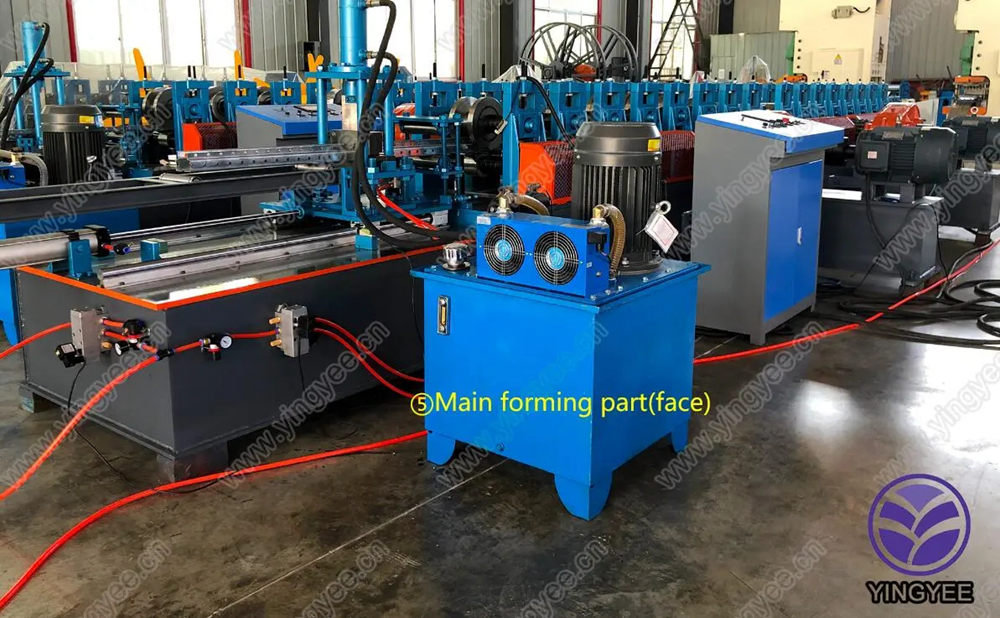
Simple Operation of Three-Axis Thread Rolling Machine
Thread rolling is an essential manufacturing process employed in the production of fasteners, such as bolts and screws. Among the various machines used in this process, the three-axis thread rolling machine stands out due to its efficiency and precision. This article delves into the simple operation of three-axis thread rolling machines, elucidating their working principles, advantages, and applications.
Understanding the Three-Axis Thread Rolling Machine
A three-axis thread rolling machine is designed to create threads on cylindrical workpieces through a process known as rolling. Unlike conventional cutting methods that remove material, thread rolling displaces the material, resulting in stronger threads with better surface finishes. The three axes—X, Y, and Z—provide the machine with versatility, allowing it to operate on multiple dimensions and create intricate thread profiles.
The fundamental components of a three-axis thread rolling machine include the rolling dies, workpiece holder, drive system, and control panel. The rolling dies are the heart of the machine, often made from high-strength tool steel, designed to impart the desired thread shape onto the workpiece. The workpiece holder secures the material during the rolling process, ensuring that it doesn’t shift or rotate unintentionally. The drive system, usually powered by electric motors, provides the necessary force to rotate the dies and workpieces effectively.
The Simple Operation Process
Operating a three-axis thread rolling machine is relatively straightforward and can be broken down into several stages
1. Setup The operator begins by configuring the machine for the specific job. This includes selecting the appropriate rolling dies that match the desired thread specifications. The workpiece is then securely clamped in the holder.
2. Feeding Once the setup is complete, the operator initiates the feeding process. The workpiece is moved into position to engage with the rolling dies. Many modern machines are equipped with automatic feed systems that streamline this process, making it easier and more precise.
3. Rolling Action With the workpiece in place, the machine engages the rolling action. As the dies rotate, they press against the workpiece, forming the thread profile. The three-axis functionality allows for modifications in the rolling angles, thus accommodating various thread designs and ensuring uniformity across batches.

4. Monitoring During operation, it’s crucial for the operator to monitor the process. Some advanced machines come equipped with sensors and control systems that provide real-time data on the rolling parameters, allowing operators to make quick adjustments if necessary.
5. Finishing After the rolling process is complete, the workpiece is removed from the holder. It may undergo additional finishing processes, such as cleaning or heat treatment, to enhance properties like hardness and corrosion resistance.
Advantages of Three-Axis Thread Rolling Machines
The simple operation of three-axis thread rolling machines brings several advantages. Primarily, these machines offer superior efficiency compared to traditional cutting methods, significantly reducing production time. The cold working nature of rolling means that the threads produced are generally stronger, exhibiting better fatigue resistance and tensile strength.
Furthermore, since thread rolling generates less waste material, it is a more sustainable option for manufacturers. The surface finish of rolled threads is also superior, requiring minimal post-processing and ensuring a better fit in applications.
Applications
Three-axis thread rolling machines are widely used across various industries, including automotive, aerospace, and construction. They are particularly favored for the production of high-strength fasteners that must withstand extreme mechanical stresses. Additionally, these machines are instrumental in producing specialized components that require precise threading, such as hydraulic fittings and electronic housing.
Conclusion
In conclusion, the three-axis thread rolling machine exemplifies an efficient and straightforward solution for producing high-quality threaded components. Its simple operation—ranging from setup to rolling—ensures that manufacturers can achieve optimal results in less time, all while maintaining exceptional material properties. As industries continue to evolve, the demand for such innovative machinery will undoubtedly grow, solidifying the importance of thread rolling technology in modern manufacturing processes.